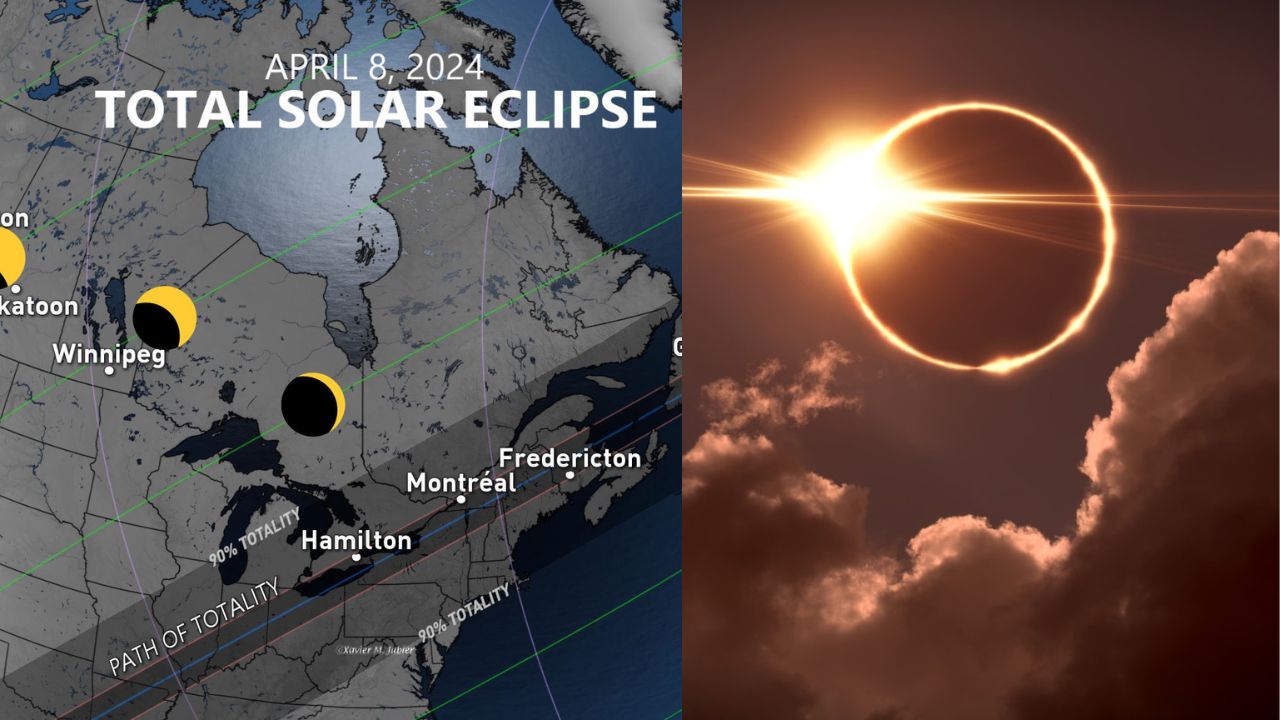Planning to witness the April 8 solar eclipse within the totality path across the U.S.? Be prepared to contend with potential cloud cover. The upcoming event has astronomers and enthusiasts mapping out prime viewing locations, but weather patterns typical for April may pose challenges.
During the last total solar eclipse on August 21, 2017, observers from Oregon to South Carolina experienced clear summer skies. However, historical weather data suggests that this time around, individuals within the totality path may encounter more clouds than anticipated.
According to Mike Augustyniak, NASA reports that approximately 70% of the Earth is typically cloud-covered at any given time. Additionally, the current El Niño pattern, known for its potential to bring cloudy and rainy conditions, adds another layer of uncertainty. While El Niño usually increases the likelihood of cloud cover, this year’s pattern has been less active than usual. However, certain regions, like Texas Hill Country and western Texas, have experienced drier conditions. If this trend persists, it could bode well for eclipse viewers in those areas.
As America eagerly anticipates the April 8 total solar eclipse, enthusiasts are scouting prime locations within the totality path. However, those aiming for an unobstructed view of the corona and a fully darkened midday sky might face the challenge of navigating through clouds due to typical April weather patterns.During the last total solar eclipse in 2017, observers along the elongated path from Oregon to South Carolina enjoyed mostly clear summer skies. Yet, historical weather data suggests that this time, individuals within the totality path may encounter more cloud cover.
Mike Augustyniak, CBS Minnesota’s director of meteorology, highlights NASA’s estimation that around 70% of the Earth is typically cloud-covered at any given time. Additionally, despite being in the midst of changing seasons, this year’s solar event coincides with a relatively subdued El Niño pattern, which traditionally brings cloudier and rainier conditions.
While the path of totality stretches approximately 2,500 miles across America, spanning from the Texas border to northeastern Maine, it’s only about 150 miles wide. Despite its broader width compared to 2017, potential cloud cover remains a concern for optimal viewing. However, some areas, like Texas Hill Country and western Texas, have experienced drier conditions lately, offering hope for clearer skies during the eclipse.
For those planning to view the eclipse in Texas, Oklahoma, and Arkansas, meteorologist Augustyniak suggests heading further south for clearer skies during totality. He specifically mentions the Hill Country of Texas and the Mexican states of Coahuila and Durango as favorable locations.
However, venturing south also increases the likelihood of encountering clouds and rain. According to Ray, it may be necessary to engage in some reverse storm-chasing, maneuvering away from approaching clouds rather than towards them, especially in Texas, Arkansas, and Oklahoma.
Ray anticipates storms in the vicinity around April 8, a common occurrence during the spring season in the region. While long-range models, like the GFS, hint at storms on the specified date, their accuracy for a specific day remains uncertain. Nonetheless, there’s a good chance that storms indicated by the model will manifest within approximately a 36-hour window.

